America's Heartland Means Misery for some Horses | ||||
Last month, Animals' Angels conducted an extensive two-week investigation across the Midwest leading them through Iowa, Minnesota and South Dakota. Large scale kill buyers, so far widely unknown to the public, were found. These buyers have been quietlyoperating under the radar, violating the Commercial transport of Equines for Slaughter Regulations while shipping thousands of horses to their deaths each year. Animals' Angels decided it was time for their close-up. Kalona, Iowa's motto is, 'Where time moves at a slower pace...'Unfortunately the same cannot be said for slaughter-bound horses entering the auction floor at the Kalona Sale Barn. Investigators were reminded just how risky their jobs can truly be on the morning of August 6, 2012. A driver of the auctioneer's truck suffered a medical emergency causing him to lose control over his vehicle and accelerate into a crowd of people standing outside the auction barn. Six people were struck, with one dying at the scene. Investigators barely escaped. Once the emergency vehicles departed, 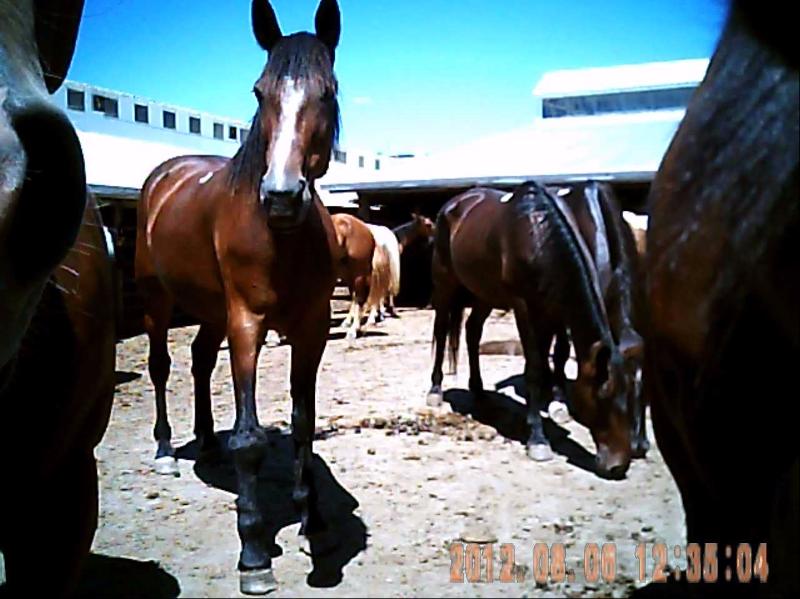 it was back to business as usual at the auction. A long line of trucks were observed waiting to unload horses at the loading ramp. Loose horses were put into an outside pen area with signs stating they were to be sold "As Is". The majority of the horses appeared agitated, and was nervously pacing in the pen. Dominant horses were safeguarding the hay causing some horses to fight, kick and bite one another. Several horses appeared newly injured with fresh cuts and bite marks. Others were seen limping, had swollen legs, or were thin. it was back to business as usual at the auction. A long line of trucks were observed waiting to unload horses at the loading ramp. Loose horses were put into an outside pen area with signs stating they were to be sold "As Is". The majority of the horses appeared agitated, and was nervously pacing in the pen. Dominant horses were safeguarding the hay causing some horses to fight, kick and bite one another. Several horses appeared newly injured with fresh cuts and bite marks. Others were seen limping, had swollen legs, or were thin.
Investigators checked parking areas for the presence of kill buyers. Scott Kurtenbach'struck and trailer from Lawler, IA and Keith Tongen's truck and trailer from Brownton, MN were quickly located. After the riding horse sale ended, employees began readying the loose horses to go through the auction. One employee began removing the shoes from the horses, likely in preparation for their final destination, the slaughter plant, while another started moving the horses closer to the sale floor. Inside the barn, an employee was seen harshly hitting the horses with a stick moving them toward a loud hydraulic gate which leads into the auction ring. Confused by the noise and panicked by the environment, the horses began taking their frustration out on each other. 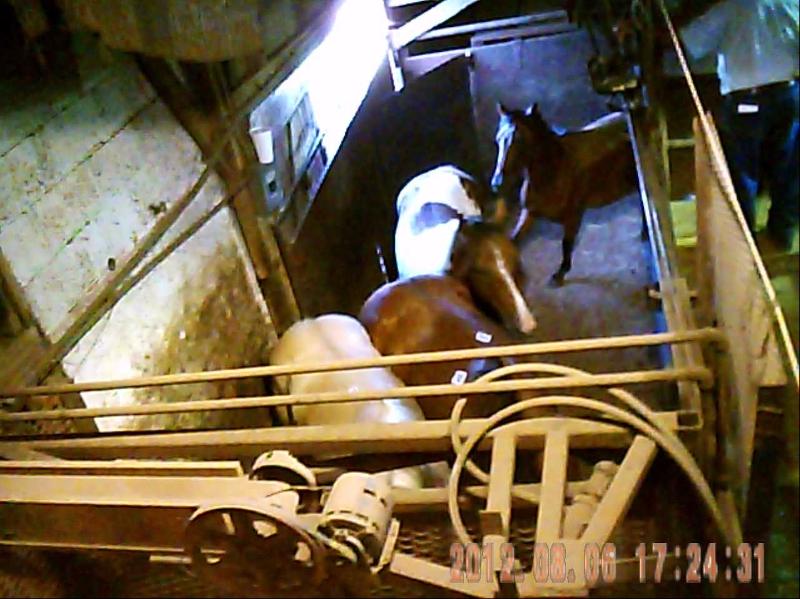 Terrified horses continued to be pushed towards the gate, with several becoming crushed by the gate as they tried to enter. Some horses slammed into the gate or the metal tubing with such force that they appeared dazed after the collision. Terrified horses continued to be pushed towards the gate, with several becoming crushed by the gate as they tried to enter. Some horses slammed into the gate or the metal tubing with such force that they appeared dazed after the collision.Compared to the riding horses, the "loose" horses sold at an extremely accelerated rate, with a new horse entering the ring about every twenty seconds. The majority of these 350 horses were being fought over by only 3 bidders, the kill buyers. After the sale ended, investigators watched as only Scott Kurtenbach and Keith Tongen's trucks were loaded. The remaining horses were moved back to the outside pens to stay for the night. (WARNING! VIDEO CONTAINS GRAPHIC IMAGES THAT MIGHT BE DISTURBING TO SOME VIEWERS.)
The following morning, investigators returned and spent the next 2 days documenting 4 G Trucking from Forest City, MO, Sweeting & Sons from Riverside, IA, and G. Nadeau Express from Ste-Apolline, Quebec loading horses and traveling south to Oklahoma as well as north to Canada. Minnesota The investigation continued at the collecting station of Keith Tongen.Tongenships about 3,600 horses annually to slaughter, and is a repeat offender of the Commercial Transport of Equines for Slaughter Regulation. You may remember that he and James Anderson made the news in October, 2007, when his double decker tipped over carrying 59 Belgians, killing 18 of them. Investigators found about 60 horses (most with their auction tags still attached) gathered around hay feeders at his feedlot in Brownton, MN. The majority of the horses appeared in good condition, with the exception of a chestnut mare that had an open wound on her right shoulder. Investigators watched the property for several hours, but there was no activity. 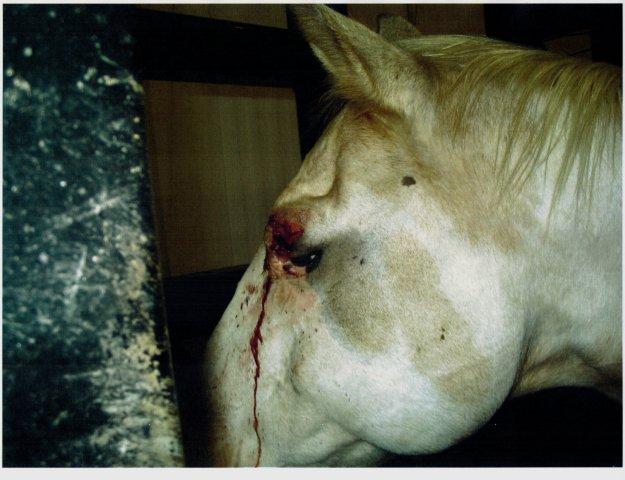 Iowa Scott Kurtenbach has been shipping thousands of horses a year to slaughter. Also a serious violator of transport law, his offenses include shipping horses unable to bear weight on all four-legs, those with large cuts/severe injuries, and one which was condemned at the plant for gangrene and septicemia. At his collecting station in Lawler, IA, on August 9, 2012, investigators observed dry lots containing about 120 horses. Several of the pens were greatly over-crowded, with horses barely having enough room to move around.  There was quite a bit of commotion, with trucks coming and going, and horses being moved. Disturbingly,investigators discovered what appeared to be a pile of horse bones discarded in a shallow ditch next to his property. Kurtenbach hasn't slowed down since he started, and investigators will continue to monitor his activity. South Dakota 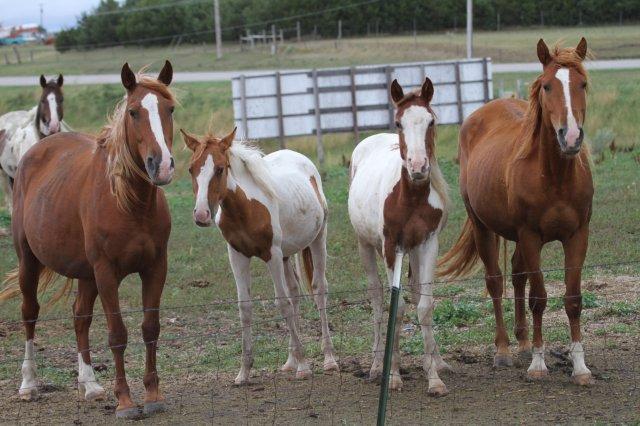 Mike O'Connell is a kill buyer out of Mobridge, SD that has been buying horses at auctions across the Midwest/Southwest for 40 years. Investigators observed approximately 50 horses and a few goats contained within his run-down, trash-infested collecting station. Investigators could easily determine that several horses appeared thin. In surrounding fields, many pregnant mares were seen with foals nursing at their sides. The fields contained debris which puts the horses, especially the curious foals, at risk of obtaining serious injuries. Randy & Tanner Musick operate Musick Livestock in Mitchell, SD. The Musick's have been in the slaughter business for a long time, and are no strangers to transport violations. Greeting investigators at their collecting station was a large horse statue and sign reading, "Horses Bought Daily". 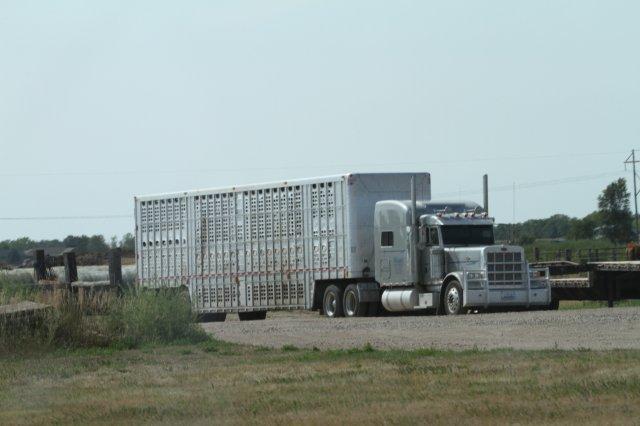 Approximately 50 horses were seen standing amid manure piles in the pen area and surrounding fields. Several horses were thin, and had scratches or bite marks. When investigators arrived the next morning, one truck and double deck trailer observed the day before was gone, and fewer horses were counted. Approximately 50 horses were seen standing amid manure piles in the pen area and surrounding fields. Several horses were thin, and had scratches or bite marks. When investigators arrived the next morning, one truck and double deck trailer observed the day before was gone, and fewer horses were counted.In conclusion: The Midwest provides a steady stream of inventory for kill buyers and others in the horse slaughter business. Animals' Angels will increase our presence, and give it the full attention it deserves. |
9 CFR Part 88 - Clearly defined, Clearly violate |
The Commercial Transport of Equines to Slaughter Regulation clearly states that the trailers hauling slaughter horses have to be designed, constructed, and maintained in a manner that at all times protects the health and well-being of the equines being transported. On October 7, 2011 it became illegal to transport slaughter horses on both levels of a double deck trailer anytime, anywhere. 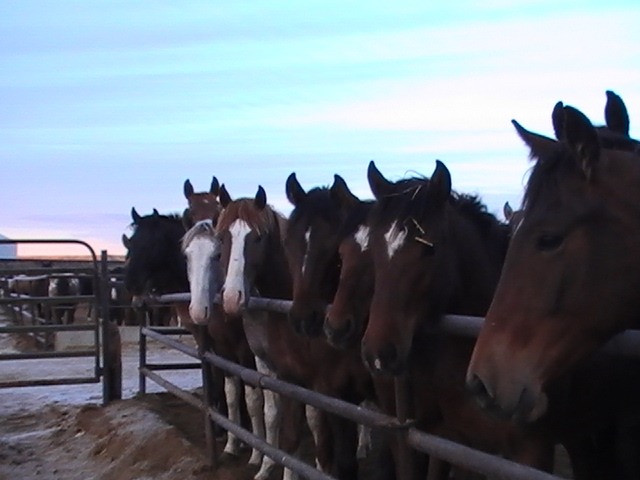 Above vehicle safety requirements, an owner/shipper must also abide by the minimum standards of humane treatment for slaughter horses. Adequate food, water, and at least 6 hours of rest are required before loading, and horses may not be confined inside of a trailer for longer than 28 hours. Stallions and other aggressive horses must be segregated from the rest of the shipment, downed horses must be euthanized if incapable of standing, and dead horses must be reported to APHIS. Above vehicle safety requirements, an owner/shipper must also abide by the minimum standards of humane treatment for slaughter horses. Adequate food, water, and at least 6 hours of rest are required before loading, and horses may not be confined inside of a trailer for longer than 28 hours. Stallions and other aggressive horses must be segregated from the rest of the shipment, downed horses must be euthanized if incapable of standing, and dead horses must be reported to APHIS. The owner/shipper must complete the VS Form 10-13 (Fitness to Travel to a Slaughter Facility) in its entirety, to include the boxes swearing that each horse can bear weight on all four legs, walk unassisted, is not blind in both eyes, is over 6 months of age, and is not likely to give birth during transport. They must also state the date, time, and location the horses were loaded onto the truck, as well as their destination. Backtags must be physically applied to each horse in the shipment, and must match the detailed description of the horse on the form. 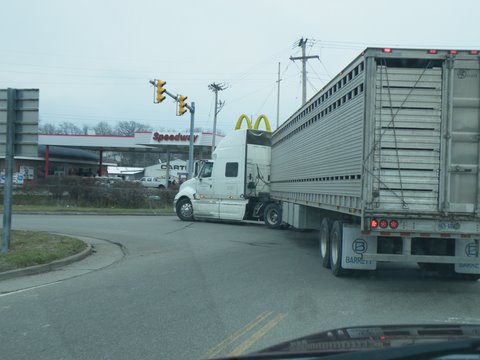 Animals' Angelsrecently received a list of violations via FOIA request from a one-month period at a Canadian slaughter plant. Between February 2 and February 26, 2009, 25 loads of horses were received from the US and subsequently slaughtered. While there is nothing unusual about this data, it's the chilling evidence in the details that brings alarm. 13 horses were missing or not accounted for in the loads, and 11 horses were condemned(melanoma/colic/pneumonia/positive STOP test/serious atrophy of fat). 5 horses were down on trailers (one euthanized), and 3 died in holding pens. At least 3 full loads traveled longer than 28 hours, and 11 horses arrived either completely blind, injured or severely weak. The following comments are examples of what can be found in the documents: "One horse, backtag 1102, significant proud flesh LH, front leg injury - sent to slaughter." "Horse down on trailer, vet dispatched to assess. Horse euthanized and removed, load resealed." "1 horse had hoof outside of trailer." "1 horse - USEA2866 - blind in both eyes, not segregated." "1 horse not on certificate (USEA2871) killed on Feb. 5 and held in cooler jail." "One horse with laceration of LF below carpus - USET4963 killed immediately." "1 bay horse, favoring LH when unloaded - on PM (postmortem) has extensive bruising of hip. Hip removed." 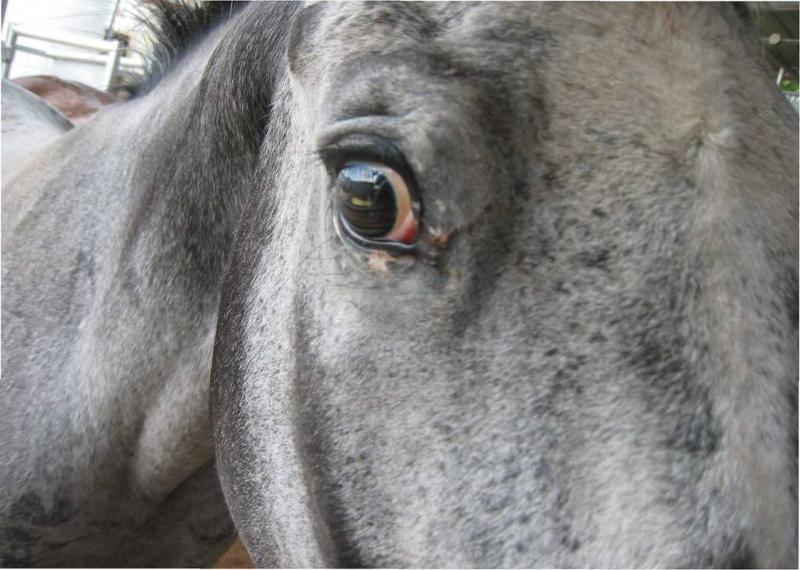 Over 40 VS Form 10-13 errors, too many to list, here are a few: "Of the 21 horses on the certificate with the correct backtag numbers listed, the descriptions are wrong on 9." "30 animals on certificate. 1 died. 1 left at rest stop. 7 descriptions do not match actual horses rec'd.""42 horses on certificate. Only 36 arrived." Trailer/transport condition violations were also noted. Here are 2 comments regarding the transport that particularly stood out to us: "Partition gate of trailer had blood over both sides, opening in middle of partition area of entrapment. Cables along walls of trailer loose." "4 draft horses in front compartment, not enough head room." What is not mentioned in any of the documents, is an indication of punishment or follow up from US authorities regarding most of these clear violations of the regulation. In fact, in the FOIA record one IES investigator asks the other sharing the evidence with him:"Please explain where you got exhibit 9? " (Documents in question) and continues: "There is very little information that is mailed to IES from Canada to conduct an investigation." Without efficient enforcement of the Commercial Transport of Equines to Slaughter Regulations, horses will continue to be left without protection. USDA and CFIA need to tighten cross-border communications with each other and increase the amount of evidence being shared among officials, veterinarians and plant personnel alike. All transport violations documented at the Canadian plants should be photographed and all pictures, affidavits and other evidence should be mailed to USDA immediately. Until better cooperation can occur, the effectiveness of the regulations will continue to remain questionable. Animals' Angels will continue to monitor these violators, and violations. |
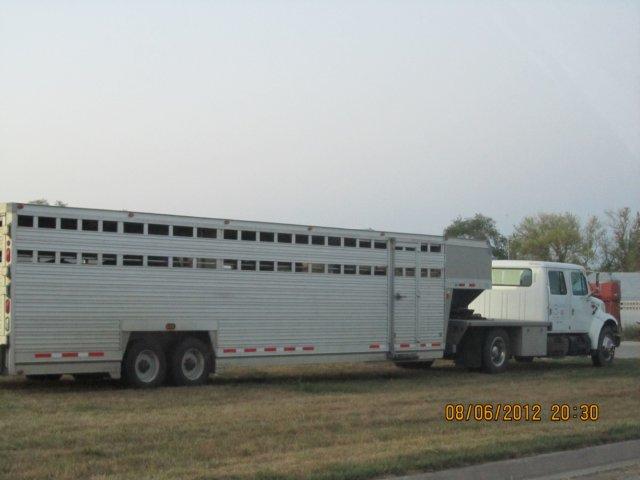
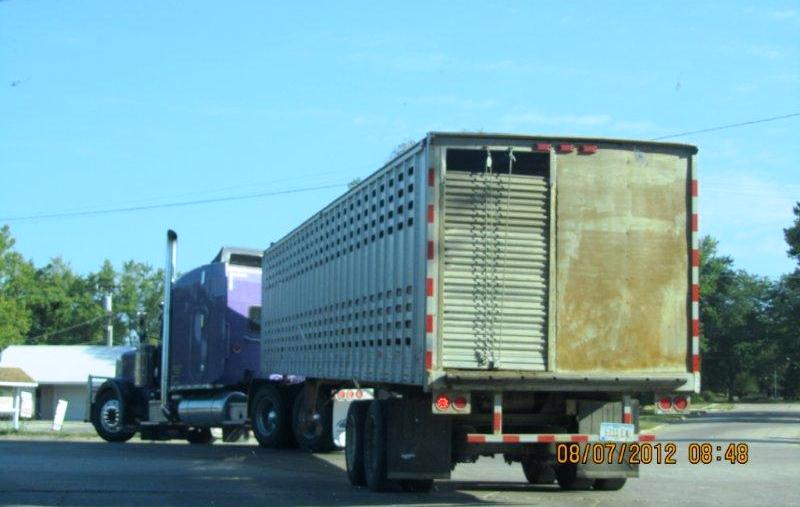









No comments:
Post a Comment